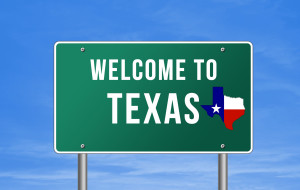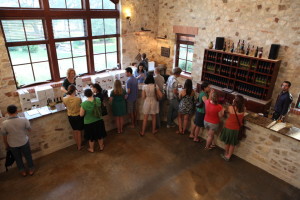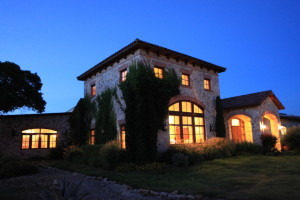Today we have a guest post from Elizabeth Miller, CSS, CSW. Elizabeth tells us about her recent trip to the Texas wine country.
“Nature seemed to have intended Texas for a vineyard to supply America with vines.” -Stephen F. Austin
The “Father of Texas” saw the potential…. the future of Texas wine. Stephen F. Austin came to Texas with the first colonizing families in the early 1800s. When he made that statement, he likely didn’t expect two centuries would pass until the Texas wine industry would begin to reach its full potential.
Today, a tourist can drive just a few miles out of the city of Austin, the namesake of Stephen F. Austin, and find a burgeoning wine scene… not quite there, but on its way to becoming a major American wine region! I took that drive recently to visit the bold new producers that are making Texas one of the most exciting and underrated wine destinations in the country.
There is another timely impetus for my Texas travels: I am presenting a SWEbinar on December 7th “Emerging Wine Regions of the US.” In the webinar promo, I tease: “Who knew that Texas had such a long history of wine production, and that the state grows more Vitis species that any other region on earth?” I had research to do, and my curiosity was piqued!
A Long Lone Star History: With most of today’s Texas producers under a decade old, it’s easy to forget that the history of the Texas industry dates back to the 1600s! One of the earliest vineyards planted in North America lies in Texas, planted by Franciscan priests in 1662. As European settlers followed, the industry developed, and by 1900 Texas had more than twenty-five wineries. However, just like everywhere else in America, Prohibition brought an end to this momentum.
It wouldn’t be until the 1970s that Texas would witness a revival of its wine industry. It was a bit of a later start, compared to California, but commercial vineyards and wineries started popping up.
On my journey into Texas wines, I was happily led to Duchman Family Winery and Flat Creek Estate. These two wineries are among the 350-plus Texas wineries that are changing that are, slowly but surely, changing the public perception about Texas wines.
Duchman Family Winery: To begin our visit, we left the pavement of urban Austin for the rolling hills and ‘peaking’ vineyards of Driftwood, Texas. For our first stop, we arrived at Duchman Family Winery’s beautiful Italianate villa and were greet by Jeff Ogle, the estate’s General Manager. The Duchman winery story began, Jeff told us, in 2004 when Drs. Stan and Lisa Duchman founded the winery with an aim for world-class winemaking. They hired Dave Reilly—a native Texan—as their winemaker, and quickly started seeing their wines medal in some of the most prestigious wine competitions. They have become one of the most renown and quality minded producers in Texas.
Given the infant state of Texas, Duchman’s motto is not to be taken lightly: 100% Texas Grapes, 100% Texas Wine…and 100% Texas Farmers. A day will come, hopefully sooner rather than later, that all Texas labeled wines will be from 100% Texas fruit. Texas is not quite there yet, as the demand for grapes exceeds the current acreage of the productive vineyards (which is growing, but not quite there yet).
Duchman is growing grapes in two of the state’s 8 AVAs: Texas High Plains and Texas Hill Country. The Texas Hill Country AVA is one of the largest AVA in the US, covering 9 million acres and as such, it has a number of unique microclimates. Many wineries and a good deal of wine tourism are located within this area. The Texas High Plains AVA is located up in the Texas panhandle, where the climate is very cool and dry, with an elevation of 3,000-4,000 feet.
Back in the tasting room at Duchman, we started with the 2015 Duchman Family Vermentino, crisp, nuanced, truly a world class palate. Another Italian variety, Montepulciano, has been produced at Duchman since almost day one. In tasting the 2012 Duchman Family Montepulciano, I realized why it’s one of the most popular wines in their selection, with balanced acidity, rich blackberry, plum, and aromas of vanilla and spice. There is no true consensus on which grape is the grape of Texas, but tasting these varieties would stand the test in a global blind comparison!
Parting from Duchman was not without another Texas lesson: the wine growler. That 2015 Montepulciano walked out the door with us in a 750ml growler. Growlers typically make us think of beer, which has historically been approved by federal regulations. In Texas, Whole Foods has been a promoter of keg wine and in reusable containers, and helped pave the way for the Alcohol and Tobacco Tax and Trade Bureau to rule in favor of wine growlers. Only two states, Oregon and Texas, specifically allow retailers and wineries to fill growlers with wine for sale off-premise. Personally, I hope this legislation comes to New York State.
Our Duchman Family Winery growler traveled quite a bit and proved the quality of Duchman’s winemaking. After the tasting room, we immediately headed to the nearby Salt Lick BBQ, a Texas Hill Country BBQ restaurant with recipes that have roots back to the wagon trains in the mid-1800s! That Montepulciano shined with the rich slabs of barbecue. Surprisingly, we didn’t finish the growler, and some Montepulciano accidentally made its way back to New York in our checked suitcase, where a few days later, it was discovered and tasted. Would you know, the Duchman Family Winery Montepulciano held up through the travels, and it was delicious!
Learn about Texas and other emerging wine regions in Elizabeth’s December 7th SWEbinar: Wednesday, December 7, 7:00 pm central time – Emerging Wine Regions of the US – presented by Elizabeth Miller, CSW, CSS. Who knew that Texas had such a long history of wine production, and that the state grows more Vitis species that any other region on earth? Or that one of Virginia’s oldest wineries is exporting its wine to China. Did you know that Idaho has some of the highest elevation vineyards in the country, or that one of the best domestic Méthode Champenoise wines comes from New Mexico? This webinar covers the lesser known wine producing states, their terroirs, grapes and future growth. Elizabeth Miller is a retailer whose home state of New York is a successful emerging wine region.
Check back in a few days for part two of Elizabeth’s tour of Texas Hill Country wineries!



